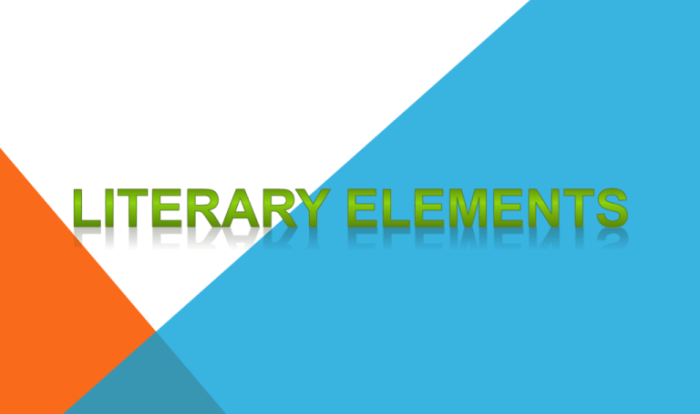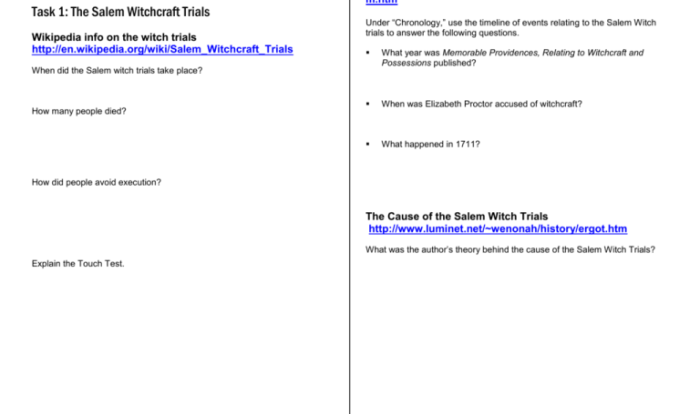Coral Island and Lord of the Flies, two classic novels of adventure and survival, have captivated readers for generations. Both stories follow a group of young boys who are stranded on a remote island, but their experiences couldn’t be more different.
Coral Island is a tale of friendship, cooperation, and the power of imagination, while Lord of the Flies is a dark and harrowing allegory of the human condition.
In this essay, we will compare and contrast these two novels, exploring their themes, settings, characters, and narrative techniques. We will also discuss the historical and cultural context in which they were written, and their enduring legacy in literature and popular culture.
Literary Analysis: Coral Island And Lord Of The Flies
Coral Islandby Robert Michael Ballantyne and Lord of the Fliesby William Golding are both classic novels that explore the themes of civilization and savagery. While both novels feature a group of boys stranded on a deserted island, they take very different approaches to the subject matter.
Coral Islandis a more traditional adventure story, with a focus on the boys’ survival and their eventual rescue. The boys are able to maintain a sense of order and cooperation, and they ultimately succeed in creating a thriving community on the island.
Lord of the Flies, on the other hand, is a much darker and more pessimistic novel. The boys quickly descend into savagery, and the island becomes a symbol of the darkness that can lurk within human nature.
Themes
- Civilization vs. Savagery:Both novels explore the tension between civilization and savagery. In Coral Island, the boys are able to maintain a sense of order and cooperation, while in Lord of the Flies, they quickly descend into savagery.
- The Nature of Evil: Lord of the Fliesis a particularly dark and pessimistic novel, and it offers a chilling exploration of the nature of evil. The novel suggests that evil is not something that is external to human nature, but rather something that is inherent within us all.
Settings
The settings of Coral Islandand Lord of the Fliesare both important to the novels’ themes. Coral Islandis set on a tropical island paradise, while Lord of the Fliesis set on a荒岛. The contrasting settings reflect the different tones of the two novels. Coral Islandis a more optimistic novel, while Lord of the Fliesis a much darker and more pessimistic novel.
Character Development
- Ralph:Ralph is the leader of the boys in Lord of the Flies. He is a natural leader, and he is able to maintain a sense of order and cooperation among the boys. However, he is also flawed, and he is unable to prevent the boys from descending into savagery.
- Jack:Jack is Ralph’s rival. He is a charismatic and ruthless leader, and he represents the savage side of human nature. Jack is ultimately responsible for the boys’ descent into savagery.
Historical and Cultural Context
The novels Coral Islandand Lord of the Flieswere written in different time periods and reflect the social and political climate of their respective eras. Coral Island, written in 1858, was influenced by the Victorian era’s emphasis on adventure, exploration, and the civilizing mission. Lord of the Flies, written in 1954, was shaped by the post-World War II era’s disillusionment with civilization and the rise of existentialism.
Victorian Era Values in Coral Island
Coral Islandreflects the Victorian era’s belief in the superiority of British civilization. The novel’s protagonists are shipwrecked boys who use their knowledge and skills to establish a functioning society on a remote island. They embody the Victorian ideals of self-reliance, courage, and the civilizing mission, which held that it was the duty of Europeans to bring civilization to “uncivilized” parts of the world.
Post-World War II Disillusionment in Lord of the Flies
In contrast, Lord of the Fliesreflects the disillusionment with civilization that prevailed after World War II. The novel’s protagonists are also shipwrecked boys, but they quickly descend into savagery and violence. The novel explores the dark side of human nature and questions the idea that civilization is inherent in human beings.
It also reflects the existentialist philosophy that emphasizes the absurdity of life and the importance of individual freedom.
Symbolism and Allegory
In both Coral Islandand Lord of the Flies, symbolism and allegory play a significant role in conveying the authors’ messages about human nature and society.
Coral Island, Coral island and lord of the flies
Coral Islandemploys numerous symbols to explore themes of civilization and savagery. The island itself symbolizes the uncharted and untamed wilderness that confronts the boys. The conch shell, which Ralph uses to maintain order, represents civilization and the rule of law. In contrast, the fire symbolizes the destructive and chaotic forces that threaten to overwhelm the boys.
Lord of the Flies
Lord of the Fliesalso features a rich array of symbols. The island represents the isolated and dangerous environment in which the boys are forced to survive. The pig’s head, which the boys offer to the “beast,” symbolizes their own savage impulses. The conch shell, as in Coral Island, represents civilization and order, while the fire symbolizes both the potential for good and the destructive power of chaos.
Allegory
Both novels can be interpreted as allegories for human nature and society. Coral Islandsuggests that civilization is a fragile construct that can easily be undermined by the forces of savagery. Lord of the Fliesgoes even further, arguing that the potential for evil is inherent within human nature and that civilization is a constant struggle against this darkness.
Narrative Structure and Techniques
Coral Islandand Lord of the Fliesemploy distinct narrative structures and techniques that shape the reader’s experience and interpretation of these novels.
Flashbacks
Both novels utilize flashbacks to provide context and depth to the characters and events. Coral Islandincorporates flashbacks to reveal the boys’ lives before their shipwreck, establishing their personalities and relationships. In contrast, Lord of the Fliesemploys flashbacks more sparingly, primarily to foreshadow the boys’ descent into savagery and the tragic events that unfold.
Foreshadowing
Foreshadowing is a key narrative technique in both novels, creating a sense of suspense and anticipation. Coral Islandforeshadows the boys’ eventual rescue and return to civilization through subtle hints and premonitions. Lord of the Flies, however, uses foreshadowing more overtly, with the ominous presence of the conch and the appearance of the “beast” hinting at the impending chaos and violence.
Symbolism and Allegory
Symbolism and allegory are also employed to enhance the narrative structure and techniques of these novels. In Coral Island, the island itself serves as a microcosm of the world, representing both the potential for paradise and the dangers of isolation. In Lord of the Flies, the conch symbolizes civilization and order, while the “beast” represents the primal instincts that lurk within human nature.
Impact on Reader’s Experience
The narrative structures and techniques employed in Coral Islandand Lord of the Fliessignificantly impact the reader’s experience. The flashbacks and foreshadowing create a sense of anticipation and suspense, while the symbolism and allegory add depth and resonance to the characters and events. Through these techniques, both novels explore the complexities of human nature and the struggle between civilization and savagery.
Film Adaptations
The novels “Coral Island” and “Lord of the Flies” have both been adapted into films multiple times. These adaptations have varied in their faithfulness to the original texts, as well as in their critical and commercial success.
Coral Island, Coral island and lord of the flies
The first film adaptation of “Coral Island” was released in 1957. This film was a relatively faithful adaptation of the novel, and it was generally well-received by critics and audiences. However, some critics felt that the film was too simplistic and that it did not capture the full complexity of the novel.
In 1987, a second film adaptation of “Coral Island” was released. This film was more loosely based on the novel, and it made a number of changes to the plot and characters. The film was not as well-received as the 1957 adaptation, and it was criticized for its lack of faithfulness to the original text.
Lord of the Flies
The first film adaptation of “Lord of the Flies” was released in 1963. This film was a critical and commercial success, and it is considered to be one of the best film adaptations of a novel ever made. The film was praised for its faithfulness to the novel, its powerful performances, and its stunning cinematography.
In 1990, a second film adaptation of “Lord of the Flies” was released. This film was not as well-received as the 1963 adaptation, and it was criticized for its lack of faithfulness to the novel and its poor performances. However, the film did have some strong points, such as its stunning cinematography and its powerful ending.
The film adaptations of “Coral Island” and “Lord of the Flies” have had a significant impact on the legacy of the novels. These films have helped to introduce the novels to a wider audience, and they have helped to shape the way that people think about the novels.
The films have also sparked a number of debates about the meaning of the novels and their relevance to contemporary society.
Expert Answers
What are the main themes of Coral Island?
The main themes of Coral Island are friendship, cooperation, and the power of imagination.
What are the main themes of Lord of the Flies?
The main themes of Lord of the Flies are the human condition, the savagery of humanity, and the importance of civilization.
How are Coral Island and Lord of the Flies similar?
Coral Island and Lord of the Flies are both stories about a group of young boys who are stranded on a remote island. Both novels explore the themes of friendship, cooperation, and the human condition.
How are Coral Island and Lord of the Flies different?
Coral Island is a tale of friendship, cooperation, and the power of imagination, while Lord of the Flies is a dark and harrowing allegory of the human condition.

